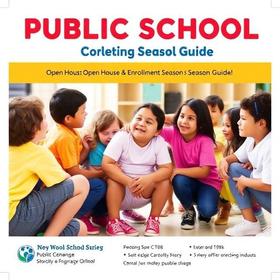Is Your Public School Understaffed? Why Schools Are Instituting Hiring Freezes
Amidst nationwide budget cuts, nearly all public schools have been forced to readjust their operations.
- Subsequently, many schools have been forced to implement hiring freezes, reducing the number of teachers on each campus.
- In fact, experts found that 72% of polled public schools anticipate more job cuts.
What does this mean for your child?
- The hiring freezes translate into a larger number of students per classroom, which means less one-on-one attention for every student.
- Schools are feeling the ramifications of the economy from the East Coast to the West Coast, and so are students.
This video explains the pros and cons of becoming a teacher.
Thousands of Teaching Positions Left Vacant
According to the New York Times, New York area schools are a prime example of the nationwide budget struggles facing public school leaders.
- For example, just two weeks before the start of the 2009-2010 school year, approximately 1,800 teaching jobs in various New York City public schools remained vacant.
- While school leaders desperately wanted to fill the teaching job openings, reduced operating funds left leaders with limited options.
- In fact, the Education Department enforced a mandatory hiring freeze in the spring of 2009, prohibiting hiring new and/or returning teachers until further notice.
Fewer Funds Equals Fewer Teachers
On the West Coast, North Clackamas School District, located in Oregon, has also experienced significant challenges due to the wavering economy.
- According to Oregon Live News, North Clackamas schools were forced to send lay-off notices to 60 teachers in late August, just weeks before the start of a new school year.
- Unfortunately, the local teachers’ union and school leaders struggled to meet wage agreements.
- The teacher’s union refused to accept a salary freeze, which would have opened up the monetary funds needed to keep some of the 60 laid-off teachers on staff.
As a result, while existing teachers are set to receive their yearly raise, the North Clackamas Schools strive to manage their educational plans with a 5.7 percent reduction in teaching positions.
According to further reports, “The poor economy has bruised school districts across the state, but many were able to preserve jobs and protect students when employees agreed to make concessions. Employees in the three biggest metro districts -- Portland, Beaverton, and Hillsboro -- accepted pay freezes, furlough days, and other concessions.”
Considering that North Clackamas is the state’s fifth largest school district, school leaders hoped to save approximately $3 million dollars by meeting some form of pay freeze agreement.
- However, without the pay freeze, many teachers and children will be forced to cope with the losses by being assigned to larger class sizes.
- Leaders anticipate that elementary classrooms will need to increase their student-teacher ratio, growing the class size to approximately 20 to 30 students.
- Middle schools may grow to the mid-30s, while high schools are ultimately planning for as many as 40 students in some elective classes.
This TEDx talk explains the one thing all great teachers do.
Schools Find Themselves Reversing Course
Schools throughout the St. Louis region are also striving to manage increased class sizes amidst teacher cuts and hiring freezes.
According to St. Louis Today, St. Louis schools have been forced to reverse their commitment to smaller class sizes.
“A sour economy is forcing some regional districts to reverse course, sending extra seats back into classrooms that housed fewer than 20 children.”
For example, Riverview Gardens District has been forced to eliminate nearly 100 teaching positions, increasing class sizes from 20 students to 25.
Although school leaders and educators are generally opposed to the increased class sizes,
“School administrators say they face a cold economic reality: Salaries and benefits make up at least 80 percent of a district's budget… If revenues continue to fall, there are few options besides trimming faculty.”

How Parents Can Get Involved
Each class size will likely increase if your child's school implements hiring freezes.
- With larger class sizes, it's imperative that parents become more actively involved in their children's education.
- Parents can help their children adjust to increased class sizes by providing them with one-on-one attention at home.
- Make yourself available for homework help and inquire daily about what the child learned at school.
- If a child seems to be struggling, make an appointment with the teacher immediately to discuss how you can help the child outside of school.
These efforts can help your child bridge the current budget crisis until the hiring freezes at school are lifted.
As schools navigate budget constraints and staffing challenges, hiring freezes have become a reality. Understanding the reasons behind these decisions can help communities better support their schools. Read more about the implications and potential solutions for public education.
Questions? Contact us on Facebook and Instagram. @publicschoolreview
#PublicSchools #HiringFreezes #Education #SchoolStaffing #BudgetConstraints













